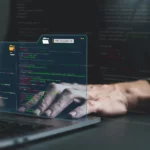The video game industry is a battleground for information. Developers work tirelessly to create immersive worlds, while leakers and data miners strive to unveil secrets before their intended release date. This creates a constant struggle, with developers employing various tactics to keep a tight lid on upcoming projects.
In a recent interview, a former lawyer who worked for both Bungie (creators of Destiny) and The Pokémon Company offered a rare glimpse into the world of leak prevention. Here, we delve into their insights and explore how these companies catch the elusive leakers who threaten to disrupt carefully planned reveals.
Beyond Non-Disclosure Agreements: Lines of Defense Against Leaks
Non-disclosure agreements (NDAs) are the first line of defense, but they aren’t foolproof. Leakers can be external sources like playtesters or contractors, or even disgruntled employees with access to confidential information. Here’s how companies like Bungie and Pokémon approach leak prevention:
- Watermarking Assets: Digital assets like images and videos can be embedded with invisible watermarks that identify the source of the leak. This allows companies to trace the leak back to a specific individual or team.
- Code Audits and Monitoring: Developers can implement code auditing tools that detect unauthorized access or suspicious activity. They can also monitor internal communications for leaks or discussions of confidential information.
- Internal Security Teams: Many companies have dedicated security teams tasked with identifying and mitigating leaks. These teams utilize various tools and techniques to track leaks and identify potential culprits.
These measures create a layered approach to leak prevention. However, the former lawyer emphasizes the importance of fostering a culture of trust and transparency within the development team. By openly communicating with employees and contractors about the importance of confidentiality, companies can build a stronger defense against leaks.
The Detective Work: Investigating Leaks and Identifying Culprits
Once a leak occurs, the clock starts ticking. Companies need to act swiftly to identify the source and contain the damage. Here’s what happens when a leak is detected:
- Identifying the Leak’s Origin: Using watermarks, code audits, and other methods, companies attempt to pinpoint the source of the leak. This could involve analyzing leaked materials for clues or tracing suspicious activity within the development team.
- Internal Investigations: Internal investigations are often conducted once a potential source is identified. This may involve interviews with employees and contractors, as well as reviewing communication logs and access records.
- Legal Action: Depending on the severity of the leak and the evidence gathered, companies may choose to pursue legal action against leakers. This could involve lawsuits or even criminal charges in some cases.

However, the former lawyer stresses that legal action is often a last resort. The primary goal is to identify the source of the leak and prevent future breaches.
The Human Element: Understanding the Motivations Behind Leaks
Why do people leak information? Motivations can vary – some might do it for personal gain, seeking attention or financial reward. Others might be disgruntled employees trying to expose perceived injustices within the company.
Understanding these motivations can help companies better address the root cause of leaks and implement more effective preventive measures. The former lawyer suggests:
- Employee Satisfaction: Ensuring employees feel valued and respected can go a long way in preventing leaks motivated by dissatisfaction.
- Transparency and Communication: Open communication between developers and the community can help manage expectations and potentially reduce the allure of “scoops” for leakers.
- Controlled Leaks: Some companies strategically leak controlled information to manage hype and anticipation. This can help take the wind out of the sails of potential leakers and maintain some control over the narrative.
Addressing the human element alongside technical safeguards can strengthen the overall leak prevention strategy.
The Ethical Debate: Leaks vs. Freedom of Information
The issue of leaks in the gaming industry is a complex one. Some argue that leaks are a form of freedom of information, allowing players to make informed decisions about upcoming games. Others argue that leaks can damage the carefully planned marketing campaigns and dampen excitement for upcoming releases.
The former lawyer acknowledges this debate. They believe that while leaks can be disruptive, companies also have a right to protect their intellectual property and control the flow of information about their products.
Ultimately, the goal is to find a balance. Companies need to be proactive in leak prevention, while also fostering an open and respectful relationship with their employees and the gaming community.
The Future of Leak Prevention: A Constant Vigilance
The battle against leaks is a continuous one. As technology advances, leakers find new ways to exploit vulnerabilities. Additionally, the rise of social media and online communities creates additional avenues for leaks to spread quickly.
















Add Comment